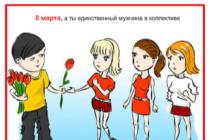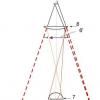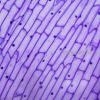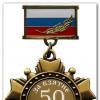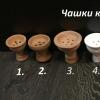page 1

page 2

page 3

page 4

page 5

page 6

page 7
INTERSTATE STANDARD
POWDER SKIM MILK
TECHNICAL CONDITIONS
Official edition
IPK PUBLISHING STANDARDS Moscow
UDC 637.143/083.74/:006.354
Group H17 STANDARD
INTERSTATE Skimmed milk powder Specifications
Dried skim milk. Specifications
Introduction date 01.01.88
This standard applies to skimmed milk powder produced from pasteurized skimmed cow's milk or a mixture thereof with buttermilk by thickening and subsequent drying.
1. TECHNICAL REQUIREMENTS
1.1. Skimmed milk powder must be produced in accordance with the requirements of this standard according to the technological instructions in compliance with sanitary norms and rules approved in the prescribed manner.
1.2. Depending on the drying method, skimmed milk powder is divided into spray, obtained by drying in spray dryers; film, obtained by drying on roller dryers.
1.3. For the production of skimmed milk powder, the following raw materials should be used:
cow's milk, harvested, not lower than the 2nd grade according to GOST 13264 *;
skimmed milk with an acidity of not more than 21 °T, obtained from harvested cow's milk of at least grade 2 according to GOST 13264 *;
buttermilk obtained in the production of unsalted sweet butter, according to regulatory and technical documentation.
When compiling a mixture of skimmed milk and buttermilk, the ratio of the mass of buttermilk to the mass of the mixture should be no more than 1:5.
1.4. According to organoleptic indicators, skimmed milk powder must meet the requirements specified in Table. 1.
|
Table 1 |
|||||||||||||||
|
|||||||||||||||
|
Note. A fodder flavor is allowed in skimmed milk powder intended for fodder purposes. |
|||||||||||||||
* On the territory of the Russian Federation, GOST 13264-70 applies, except for the requirements for raw milk for baby food.
Official publication Reprint prohibited
© Standards Publishing House, 1987 © IPK Standards Publishing House, 2002
S. 2 GOST 10970-87
|
1.5. According to physico-chemical parameters, skimmed milk powder must comply with the standards indicated in Table. 2. table 2 |
|||||||||||||||||||||||||||||||||||||||||
|
|||||||||||||||||||||||||||||||||||||||||
Note. For skimmed milk powder in transport containers, individual burnt particles are allowed.
(Changed edition, Rev. No. 1).
1.6. According to microbiological indicators, skimmed milk powder must comply with the standards specified in Table. 3.
1.7. Skimmed milk powder is sold in retail trade only by spray drying, packed in consumer packaging.
2. ACCEPTANCE RULES
2.2. Protein and lactose are determined periodically once a quarter.
2.3. Tin, copper, lead are determined periodically once a quarter.
The control of residual amounts of pesticides, toxic elements, aflatoxins B: and M r of antibiotics is carried out in accordance with the procedure established by the USSR Ministry of Health and the USSR State Agrarian Industry.
2.4. Upon receipt of unsatisfactory results of the analysis for at least one of the microbiological indicators, it is re-analyzed with a double sample taken from the same batch of the product.
The results of the reanalysis apply to the entire batch.
3. CONTROL METHODS
3.1. Sampling and preparing them for analysis - according to GOST 26809.
3.2. The appearance of the package, the determination of tightness, the state of the inner surface of metal cans, organoleptic indicators, the mass fraction of moisture and fat, acidity, solubility index, purity group, net weight of the product - according to GOST 29245 - GOST 29247, GOST 30305.2 - GOST 30305.4.
3.4. Determination of residual quantities of pesticides, aflatoxins and antibiotics is carried out according to the methods approved by the USSR Ministry of Health; toxic elements - according to GOST 26932, GOST 26933, GOST 26930, GOST 26927, GOST 26931, GOST 26934.
(Revised edition, Rev. No. 1).
3.5. Microbiological indicators - according to GOST 9225.
3.6. Analysis for pathogenic microorganisms is carried out in the order of state sanitary supervision by sanitary and epidemiological stations according to methods approved by the USSR Ministry of Health.
4. PACKAGING, LABELING, TRANSPORT AND STORAGE
4.1. Packaging and labeling of skimmed milk powder - according to GOST 23651.
Skimmed milk powder must be packaged:
in consumer packaging:
combined cans No. 13 and prefabricated metal cans No. 9 with removable lids according to GOST 12120;
packs for bulk products No. 14, 38 and 44 according to TU 10.684 with an inner hermetically sealed aluminum foil bag covered with polyethylene or other polymeric materials approved for use by the USSR Ministry of Health for packaging dairy
products;
in shipping container:
paper unimpregnated four- and five-layer bags according to GOST 2226, plywood-stamped barrels according to TU 10.10.739 and cardboard winding drums with a capacity of 50 dm 3 according to GOST 17065.
When packing the product in a transport container, polyethylene bags should be used.
The net weight of the product in consumer packaging should be, g:
in combined jar No. 13 250.0±7.5;
in a combined metal can No. 9 ........ 500.0 + 15.0;
in packs for bulk products No. 38 ........ 250.0 + 7.5;
№38 ........ 400,0+12,0;
No. 14 and 44 ...... 500.0 + 15.0.
The net weight of the product in the transport container must be constant for each batch from 20 to 30 kg inclusive. The net weight of the product in the shipping container is determined on a scale for static weighing with the highest weighing limit of 100 kg according to GOST 29329.
Skimmed milk powder without packaging is allowed to be delivered by specialized vehicles to feed mills that have specialized lines for its bulk acceptance and storage.
The net weight of the product transported by specialized vehicles is determined on a scale for static weighing with the highest weighing limit of 60 tons GOST 29329.
(Changed edition, Revision, No. 1).
4.2. The product in cans must be packed in plank non-separable boxes No. 10 and 16 in accordance with GOST 13358 or corrugated cardboard boxes No. 26 and 33 in accordance with GOST 13516, or No. 11 in accordance with GOST 13511.
The product in packs must be packed in corrugated cardboard boxes No. 17 in accordance with GOST 13513.
4.3. The label inscription of consumer packaging should contain information about food (moisture, fat, protein, lactose, vitamin B 2) and energy value of 100 g of the product.
4.4. The product must be transported by all modes of transport in covered vehicles in accordance with the rules of transport organizations for the transport of goods.
Transportation of the product by rail is carried out by carload shipments.
It is allowed to transport the packaged product in open vehicles with the obligatory covering of the outer part of the cargo with a tarpaulin or material replacing it.
The inner surface of the container of specialized vehicles before loading is subjected to sanitary treatment according to the technological instructions.
The container must be hermetically sealed and sealed.
(Revised edition, Rev. No. 1).
4.5. When transporting the product by rail, road and water transport using transport packages, packaging means are used according to the normative and technical documentation approved in the prescribed manner, fastening means in accordance with GOST 21650 or universal metal containers in accordance with GOST 15102.
When forming transport packages, flat wooden pallets are used in accordance with GOST 9557 or GOST 22831, universal box pallets.
Containers with the product are stacked on pallets, forming solid rectangular transport packages in accordance with the requirements of GOST 24597 or normative and technical documentation approved in the prescribed manner.
4.6. Skimmed milk powder should be stored:
at a temperature of 0 to 10 °C and a relative air humidity of no more than 85% for no more than 8 months from the date of production;
at temperatures up to 20 ° C and relative air humidity not higher than 75% for no more than 3 months from the date of production.
At manufacturing plants, it is allowed to store skimmed milk powder in closed warehouses at a temperature not exceeding 25 ° C for no more than 20 days.
Skimmed milk powder for feed purposes may be stored in hermetically sealed bins installed in closed warehouses at a temperature not exceeding 20 ° C for no more than 10 days from the date of production.
(Revised edition, Rev. No. 1).
INFORMATION DATA
1. DEVELOPED AND INTRODUCED by the State Agro-Industrial Committee of the USSR
2. APPROVED AND INTRODUCED BY Decree of the USSR State Committee for Standards No. 594 dated February 24, 1987
3. The term of the first inspection is 1991. The frequency of inspection is 5 years.
5. REFERENCE REGULATIONS AND TECHNICAL DOCUMENTS
|
Number of paragraph, subparagraph, enumeration, application |
GOST 10970-87
Group H17
INTERSTATE STANDARD
POWDER SKIM MILK
Specifications
Dried skim milk.
Specifications
Introduction date 1988-01-01
INFORMATION DATA
1. DEVELOPED AND INTRODUCED by the State Agro-Industrial Committee of the USSR
DEVELOPERS
G.A. Svinareva, Ph.D. tech. sciences; M.Ya.Danilov, Ph.D. tech. sciences; O.M.Golovko
2. APPROVED AND INTRODUCED BY Decree of the USSR State Committee for Standards dated February 24, 1987 N 594
3. The term of the first inspection is 1991. The frequency of inspection is 5 years.
4. REPLACE GOST 10970-74
5. REFERENCE REGULATIONS AND TECHNICAL DOCUMENTS
|
Number of paragraph, subparagraph, enumeration, application |
|
|
GOST 12120-82 |
|
|
GOST 13264-88 |
|
|
TU 10.684-88 |
|
|
TU 10.10.739-88 |
6. The limitation of the validity period was removed according to the protocol N 2-92 of the Interstate Council for Standardization, Metrology and Certification (IUS 2-93)
7. EDITION with Amendment No. 1, approved in March 1988 (IUS 7-88)
This standard applies to skimmed milk powder produced from pasteurized skimmed cow's milk or a mixture thereof with buttermilk by thickening and subsequent drying.
1. TECHNICAL REQUIREMENTS
1.1. Skimmed milk powder must be produced in accordance with the requirements of this standard according to the technological instructions in compliance with sanitary norms and rules approved in the prescribed manner.
1.2. Depending on the drying method, skimmed milk powder is divided into spray, obtained by drying in spray dryers; film, obtained by drying on roller dryers.
1.3. For the production of skimmed milk powder, the following raw materials should be used:
Cow's milk, harvested, not lower than the 2nd grade according to GOST 13264*;
Skimmed milk with an acidity of not more than 21 °T, obtained from harvested cow's milk of at least grade 2 according to GOST 13264*;
______________________
* On the territory of the Russian Federation, GOST 13264-70 applies, except for the requirements for raw milk for baby food.
Buttermilk obtained in the production of unsalted sweet butter, according to regulatory and technical documentation.
When compiling a mixture of skimmed milk and buttermilk, the ratio of the mass of buttermilk to the mass of the mixture should be no more than 1:5.
1.4. According to organoleptic indicators, skimmed milk powder must meet the requirements specified in Table 1.
Table 1
|
Name of indicator |
Characteristics of skimmed milk powder |
|
|
spray |
film |
|
|
Taste and smell |
Peculiar to fresh pasteurized skimmed milk without any foreign flavors and odors. Repasteurized aftertaste allowed |
Peculiar to repasteurized skimmed milk without any foreign flavors and odors |
|
Consistency |
Finely atomized dry powder |
Dry powder from crushed films |
|
A small amount of lumps is allowed, easily crumbling under mechanical action |
||
|
White with a light creamy tint |
Light cream to cream |
|
Note. A fodder flavor is allowed in skimmed milk powder intended for fodder purposes.
1.5. According to physical and chemical indicators, skimmed milk powder must comply with the standards specified in Table 2.
table 2
|
Name of indicator |
Product norm |
|
|
in consumer packaging |
in a shipping container |
|
|
Mass fraction of moisture, %, no more |
||
|
spray milk |
||
|
film milk |
||
|
Mass fraction of fat, %, no more |
||
|
Mass fraction of protein, %, not less than |
||
|
Mass fraction of lactose, %, not less than |
||
|
Solubility index, cm wet sediment, max |
||
|
spray milk |
||
|
film milk |
||
|
Acidity, °T, no more |
||
|
Cleanliness, group, not lower |
||
|
Mass fraction of tin, %, no more |
||
|
Mass fraction of copper, %, no more |
||
|
Lead |
Not allowed* |
|
_________________
* until 01.07.89
Note. For skimmed milk powder in transport containers, individual burnt particles are allowed.
1.6. According to microbiological indicators, skimmed milk powder must comply with the standards specified in Table. 3.
Table 3
|
Product norm |
||
|
Name of indicator |
in consumer packaging |
in a shipping container |
|
The total number of mesophilic aerobic and facultative anaerobic microorganisms in 1 g of the product, units, not more than |
||
|
Pathogenic microorganisms, including salmonella in 25 g of the product |
Not allowed |
|
|
Bacteria of the Escherichia coli group in 0.1 g of the product |
||
1.7. Skimmed milk powder is sold in retail trade only by spray drying, packed in consumer packaging.
2. ACCEPTANCE RULES
2.2. Protein and lactose are determined periodically once a quarter.
2.3. Tin, copper, lead are determined periodically once a quarter.
The control of residual amounts of pesticides, toxic elements, aflatoxins B and M, antibiotics is carried out in accordance with the procedure established by the USSR Ministry of Health and the USSR State Agrarian Industry.
(Changed edition, Rev. N 1).
2.4. Upon receipt of unsatisfactory results of the analysis for at least one of the microbiological indicators, it is re-analyzed with a double sample taken from the same batch of the product.
The results of the reanalysis apply to the entire batch.
3. CONTROL METHODS
3.1. Sampling and preparing them for analysis - according to GOST 26809.
3.2. The appearance of the package, the determination of tightness, the state of the inner surface of metal cans, organoleptic indicators, the mass fraction of moisture and fat, acidity, solubility index, purity group, net weight of the product - according to GOST 29245 - GOST 29247, GOST 30305.2 - GOST 30305.4.
3.3. Protein, lactose - by.
Skimmed milk powder must be packaged:
In consumer packaging:
Combined cans N 13 and prefabricated metal cans N 9 with removable lids according to GOST 12120;
Packages for bulk products N 14, 38 and 44 according to TU 10.684 with an internal hermetically sealed package made of aluminum foil coated with polyethylene or other polymeric materials approved for use by the USSR Ministry of Health for packaging dairy products;
In shipping container:
Paper unimpregnated four- and five-layer bags according to GOST 2226, plywood-stamped barrels according to TU 10.10.739 and cardboard winding drums with a capacity of 50 dm3 according to GOST 17065.
When packing the product in a transport container, polyethylene bags should be used.
The net weight of the product in consumer packaging should be, g:
|
in combined jar N 13 |
|||||
|
in a combined metal can |
500.0±15.0; |
||||
|
in packs for bulk products |
|||||
The net weight of the product in the transport container must be constant for each batch from 20 to 30 kg inclusive. The net weight of the product in the shipping container is determined on a scale for static weighing with the highest weighing limit of 100 kg according to GOST 29329.
Skimmed milk powder without packaging is allowed to be delivered by specialized vehicles to feed mills that have specialized lines for its bulk acceptance and storage.
The net weight of the product transported by specialized vehicles is determined on a scale for static weighing with the highest weighing limit of 60 tons GOST 29329.
(Changed edition, Rev. N 1).
4.2. The product in cans must be packed in plank non-separable boxes N 10 and 16 in accordance with GOST 13358 or corrugated cardboard boxes N 26 and 33 in accordance with GOST 13516, or N 11 in accordance with GOST 13511.
The product in bundles must be packed in corrugated cardboard boxes N 17 in accordance with GOST 13513.
4.3. The labeling of consumer packaging must contain information about food (moisture, fat, protein, lactose, vitamin B) and energy value of 100 g of the product.
4.4. The product must be transported by all modes of transport in covered vehicles in accordance with the rules of transport organizations for the transport of goods.
Transportation of the product by rail is carried out by carload shipments.
It is allowed to transport the packaged product in open vehicles with the obligatory covering of the outer part of the cargo with a tarpaulin or material replacing it.
The inner surface of the container of specialized vehicles before loading is subjected to sanitary treatment according to the technological instructions.
The container must be hermetically sealed and sealed.
(Changed edition, Rev. N 1).
4.5. When transporting the product by rail, road and water transport using transport packages, packaging means are used according to the normative and technical documentation approved in the prescribed manner, fastening means in accordance with GOST 21650 or universal metal containers in accordance with GOST 15102.
When forming transport packages, flat wooden pallets are used in accordance with GOST 9557 or GOST 22831, universal box pallets.
Containers with the product are stacked on pallets, forming solid rectangular transport packages in accordance with the requirements of GOST 24597 or normative and technical documentation approved in the prescribed manner.
4.6. Skimmed milk powder should be stored:
At a temperature of 0 to 10 °C and a relative air humidity of not more than 85%, no more than 8 months from the date of production;
At temperatures up to 20 ° C and relative air humidity not higher than 75%, no more than 3 months from the date of production.
At manufacturing plants, it is allowed to store skimmed milk powder in closed warehouses at a temperature not exceeding 25 ° C for no more than 20 days.
Skimmed milk powder for feed purposes may be stored in hermetically sealed bins installed in closed warehouses at a temperature not exceeding 20 ° C for no more than 10 days from the date of production.
(Changed edition, Rev. N 1).
The text of the document is verified by:
official publication
Milk, dairy products and canned dairy products.
Specifications: Collection of GOSTs. -
M.: IPK Standards Publishing House, 2001
Whole milk powder, GOST 4495-87
Food production. GOST 4495-87: Whole milk powder. Specifications. OKS: Food production, Milk and dairy products. GOSTs. Whole milk powder. Specifications. class=text>
GOST 4495-87
Whole milk powder. Specifications
GOST 4495-87
Group H17
INTERSTATE STANDARD
WHOLE MILK DRY
Specifications
Dry unskimmed milk. Specifications
ISS 67.100.10
OKP 92 2310
Introduction date 1988-09-01
INFORMATION DATA
1. DEVELOPED AND INTRODUCED by the State Agro-Industrial Committee of the USSR
DEVELOPERS
E.K. Zhurakhovskaya; I.A. Radaeva, Doctor of Engineering sciences; 3.A.Mishenina, Ph.D. tech. sciences; S.P. Shulkina, Ph.D. tech. sciences; V.G. Zhuravleva; M.G. Kolokolnikova; P.F. Krasheninin, Doctor of Engineering sciences; E.A. Krasilnikova
2. APPROVED AND INTRODUCED BY Decree of the USSR State Committee for Standards dated 27.08.87 N 3395
3. REPLACE GOST 4495-75
4. REFERENCE REGULATIONS AND TECHNICAL DOCUMENTS
Item number |
|
GOST 2226-88 | |
GOST 5981-88 | |
GOST 9225-84 | |
GOST 9557-87 | |
GOST 10444.12-88 | |
GOST 12120-82 | |
GOST 13264-88 | |
GOST 13358-84 | |
GOST 13511-2006 | |
GOST 13513-86 | |
GOST 13516-86 | |
GOST 15102-75 | |
GOST 17065-94 | |
GOST 21650-76 | |
GOST 22831-77 | |
GOST 23327-98 | |
GOST 23452-79 | |
GOST 23651-79 | |
GOST 24597-81 | |
GOST 25179-90 | |
GOST 26809-86 | |
GOST 26927-86 | |
GOST 26930-86 | |
GOST 26931-86 | |
GOST 26932-86 | |
GOST 26933-86 | |
GOST 26934-86 | |
GOST 29245-91-GOST 29248-91 | |
GOST 29329-92 | |
GOST 30305.1-95-GOST 30305.4-95 | |
TU 10.10-490-87 | |
TU 10.10-684-88 | |
TU 10.10-739-88 |
5. The limitation of the validity period was removed according to protocol N 2-92 of the Interstate Council for Standardization, Metrology and Certification (IUS 2-93)
6. EDITION (September 2008) with Amendment No. 1 approved in September 1991 (IUS 12-91), Amendment (IUS 4-97)
This standard applies to whole milk powder* obtained by drying standardized pasteurized cow's milk.
___________________
* On the territory of the Russian Federation, GOST R 52791-2007 is in force, except for the part relating to powdered milk for the production of baby food.
1. TECHNICAL REQUIREMENTS
1. TECHNICAL REQUIREMENTS
1.1. Powdered whole milk must be produced in accordance with the requirements of this standard according to the technological instructions in compliance with sanitary norms and rules approved in the prescribed manner.
1.2. Powdered whole milk is produced in the following types:
powdered milk 20% fat;
powdered milk 25% fat;
powdered milk for the production of baby food.
1.3. Depending on the processing method, powdered milk with a 25% fat content is divided into spray milk, obtained by drying in spray dryers; film, obtained by drying on roller dryers.
Powdered milk with a 20% fat content and for the production of baby food is produced only in spray dryers.
1.4. For the production of whole milk powder, the following raw materials must be used:
for powdered milk 20- and 25% fat
cow's milk harvested not lower than the second grade according to GOST 13264*;
___________________
* On the territory of the Russian Federation, GOST R 52054-2003 applies (hereinafter).
cream with a mass fraction of fat not more than 40% and plasma acidity not more than 26 °T, obtained from cow's milk not lower than the second grade according to GOST 13264;
skimmed milk with an acidity of not more than 20 °T, obtained from cow's milk not lower than the second grade according to GOST 13264;
buttermilk obtained in the production of unsalted sweet butter, according to regulatory and technical documentation;
for milk powder for baby food production
cow's milk that meets the requirements for milk for baby food.
1.5. Depending on the organoleptic, physico-chemical and microbiological parameters, whole milk powder is divided into two grades: the highest and the first.
Milk for the production of baby food products is not divided into varieties.
1.6. According to organoleptic indicators, whole milk powder must meet the requirements specified in Table 1.
Table 1
Name of indicator | Characteristics of whole milk powder |
|
Top grade | First grade |
|
Taste and smell | Characteristic of fresh pasteurized milk during spray drying and re-pasteurized (boiled) milk during film drying, without foreign tastes and odors | The same as for the highest grade. A slight fodder aftertaste is allowed, and for spray-dried milk, a repasteurization aftertaste is allowed. |
Consistency | Fine dry powder or powder consisting of agglomerated particles of milk powder |
|
A small amount of lumps is allowed, easily crumbling under mechanical action | For film milk - dry powder from crushed films |
|
White, with a slight creamy undertone for spray milk; cream for film milk |
||
Separate burnt particles are allowed |
||
Note. Powdered whole milk of the first grade for sale in a trade network, a public catering network, as well as for the production of reconstituted pasteurized milk and other dairy products is not allowed. Such milk can be sent for processing to other branches of the food industry.
According to organoleptic indicators, powdered milk for the production of baby food products must meet the requirements of the highest grade.
1.7. According to physical and chemical indicators, whole milk powder must meet the requirements specified in Table 2.
table 2
Name of indicator | |||||
25% fat | |||||
spray | film | ||||
20% fat in shipping container | in consumer | in trans | in trans | for the production of baby food |
|
Mass fraction of moisture, %, no more | |||||
Mass fraction of fat, %, not less | |||||
Mass fraction of protein, %, not less than | |||||
Solubility index, cm wet sediment, not more than: | |||||
for the highest grade | |||||
for the first grade | |||||
for baby food | |||||
Acidity, °T, no more | |||||
Cleanliness, group, not lower | |||||
__________________
* Since 09/01/93 - solubility index, cm of raw sediment - 0.1.
** From 01.09.93 - acidity, °T - 17.
1.8. The content of toxic elements, mycotoxins, antibiotics, hormonal preparations and pesticides in the product should not exceed the permissible levels established in the "Medical and biological requirements and sanitary standards for the quality of food raw materials and food products" of the USSR Ministry of Health N 5061-89 of 08/01/89*.
___________________
* SanPiN 2.3.2.1078-2001 is in force on the territory of the Russian Federation.
1.7, 1.8. (Changed edition, Rev. N 1).
1.9. According to microbiological indicators, whole milk powder must meet the requirements specified in Table 3.
Table 3
Name of indicator | Norm for whole milk powder |
||
Top grade | First grade | For production |
|
The number of mesophilic aerobic and facultative anaerobic microorganisms in 1.0 g of powdered milk, CFU, not more | |||
Coliform bacteria (coliform bacteria) in 0.1 g of powdered milk with 20 and 25% fat content and in 1.0 g of powdered milk for baby food | Not allowed |
||
Pathogenic microorganisms, including salmonella in 25 g of powdered milk | Not allowed |
||
Coagulase-positive staphylococci in 1.0 g of powdered milk | Not allowed |
||
The amount of yeast in 1.0 g of powdered milk, units, no more | |||
The number of mold fungi in 1.0 g of milk powder, units, not more than | |||
1.10. In retail trade, whole milk powder is produced only in consumer packaging.
2. ACCEPTANCE RULES
2.1. Acceptance rules - according to GOST 26809.
2.2. Protein is determined periodically once a quarter.
2.3. Control over the content of toxic elements, mycotoxins, antibiotics, hormonal preparations and pesticides is carried out in accordance with the procedure established by the manufacturer of products in agreement with the state sanitary supervision authorities and guaranteeing the safety of products.
(Changed edition, Rev. N 1).
2.4. Upon receipt of unsatisfactory results of the analysis for at least one of the microbiological indicators, it is re-analyzed with a double sample taken from the same batch of the product.
The results of the reanalysis apply to the entire batch.
3. METHODS OF ANALYSIS
3.1. Sampling and preparation for analysis - according to GOST 26809.
3.2. The appearance of the package, the determination of tightness, the state of the inner surface of metal cans, organoleptic indicators, the mass fraction of moisture and fat, acidity, solubility index, purity group, net weight - according to GOST 29245 - GOST 29248, GOST 30305.1-GOST 30305.4.
3.3. Protein - according to GOST 23327 or GOST 25179.
3.5. Determination of mesophilic aerobic and facultative anaerobic microorganisms in powdered whole milk and bacteria of the Escherichia coli group (except for powdered milk for the production of baby food) - according to GOST 9225 *.
______________
* GOST R 53430-2009 has been in force on the territory of the Russian Federation since 01.01.2011. - Database manufacturer's note.
Determination of bacteria of the group of Escherichia coli in powdered milk for the production of baby food products is carried out in accordance with the procedure for microbiological control of dry dairy products and their components, approved by the USSR Ministry of Health.
3.6. Analysis for pathogenic microorganisms and coagulase-positive staphylococci is carried out in the order of state sanitary supervision by sanitary and epidemiological stations according to methods approved by the USSR Ministry of Health.
3.7. Determination of yeast and mold fungi - according to GOST 10444.12.
(Amendment).
4. PACKAGING, LABELING, TRANSPORT AND STORAGE
4.1. Packaging and labeling of whole milk powder - according to GOST 23651.
Whole milk powder must be packed:
in consumer packaging:
prefabricated metal and combined cans with a removable stopper in accordance with GOST 12120 and a metal can N 13 in accordance with GOST 5981,
packs for bulk products according to NTD with an internal hermetically sealed bag made of combined film material "Ceflen" according to NTD or other materials permitted by the Ministry of Health;
in shipping container:
paper unimpregnated four- and five-layer bags according to GOST 2226 *, plywood-stamped barrels according to NTD and cardboard winding drums with a capacity of 50 dm3 according to GOST 17065.
_______________
* On the territory of the Russian Federation, GOST R 53361-2009 applies, hereinafter in the text. - Database manufacturer's note.
Powdered milk for the production of baby food products must be packed only in paper unimpregnated four- and five-layer bags in accordance with GOST 2226.
When packing the product in a transport container, polyethylene bags should be used.
4.2 The net weight of the product in consumer packaging must be in grams:
The net weight of the product in the transport container must be constant for each batch from 20 to 30 kg inclusive. The net weight of the product in the shipping container is determined on a scale for static weighing with the highest weighing limit of 100 kg according to GOST 29329.
4.1, 4.2. (Amendment).
4.3. The labeling of consumer packaging must contain information about food (fat, protein, lactose, vitamins A, B) and energy value of 100 g of the product.
4.4. The product in consumer packaging must be packed in plank non-separable boxes in accordance with GOST 13358 or corrugated cardboard boxes in accordance with GOST 13511, GOST 13513 or GOST 13516.
4.5. The product is transported by all modes of transport in covered vehicles in accordance with the rules of transport organizations for the carriage of goods.
Transportation of the product by rail is carried out by carload shipments.
It is allowed to transport the packaged product in open vehicles with the obligatory covering of the outer part of the cargo with a tarpaulin or material replacing it.
4.6. When transporting the product by rail, road and water transport using transport packages, packaging means are used according to the rules applicable to this type of transport, fastening means according to GOST 21650 or universal metal containers according to GOST 15102.
When forming transport packages, flat wooden pallets are used in accordance with GOST 9557 or GOST 22831, universal box pallets, flat disposable pallets according to regulatory documentation.
The container with the product is stacked on pallets, forming solid rectangular transport packages in accordance with the requirements of GOST 24597 or regulatory documentation.
4.5, 4.6. (Amendment).
4.7. Whole milk powder should be stored: at a temperature of 1 °C to 10 °C and relative air humidity not higher than 85% for no more than 8 months from the date of production.
It is allowed to store dried whole milk at manufacturing enterprises at a temperature not lower than 1 and not higher than 20 ° C for no more than 15 days from the date of production.
Jalapeno M Pepper Seeds 100 SEEDS NON-GMO
| $2.49 End Date: Saturday Jul-27-2019 18:12:47 PDT Buy It Now for only: $2.49 | |
INTERSTATE STANDARD
WHOLE MILK DRY
TECHNICAL CONDITIONS
Official edition
Standartinform
UDC 637.143/083.74/:006.354
INTERSTATE
Group H17
STANDARD
WHOLE MILK DRY
Specifications
Dry unskimmed milk. Specifications
MKS 67.100.10 OKP 92 2310
Date of introduction 01.09.88
This standard applies to whole milk powder* *obtained by drying normalized pasteurized cow's milk.
1. TECHNICAL REQUIREMENTS
1.1. Powdered whole milk must be produced in accordance with the requirements of this standard according to the technological instructions in compliance with sanitary norms and rules approved in the prescribed manner.
1.2. Powdered whole milk is produced in the following types:
powdered milk 20% fat;
powdered milk 25% fat;
powdered milk for the production of baby food.
1.3. Depending on the processing method, powdered milk with a 25% fat content is divided into spray milk, obtained by drying in spray dryers; film, obtained by drying on roller dryers.
Powdered milk with a 20% fat content and for the production of baby food is produced only in spray dryers.
1.4. For the production of whole milk powder, the following raw materials must be used:
for powdered milk 20- and 25% fat
cow's milk harvested not lower than the second grade according to GOST 13264**;
cream with a mass fraction of fat not more than 40% and plasma acidity not more than 26 °T, obtained from cow's milk not lower than the second grade according to GOST 13264;
skimmed milk with an acidity of not more than 20 °T, obtained from cow's milk not lower than the second grade according to GOST 13264;
buttermilk obtained in the production of unsalted sweet butter, according to regulatory and technical documentation;
for milk powder for baby food production
cow's milk that meets the requirements for milk for baby food.
1.5. Depending on the organoleptic, physico-chemical and microbiological parameters, whole milk powder is divided into two grades: the highest and the first.
Milk for the production of baby food products is not divided into varieties.
* On the territory of the Russian Federation, GOST R 52791-2007 is in force, except for the part concerning milk powder for the production of baby food.
** On the territory of the Russian Federation, GOST R 52054-2003 applies (hereinafter).
Official publication Reprint prohibited
© Standards Publishing House, 1987 © Standartinform, 2008
1.6. According to organoleptic indicators, whole milk powder must meet the requirements specified in Table. 1.
Table 1
|
Name |
Characteristics of whole milk powder |
|
|
indicator |
Top grade |
First grade |
|
Taste and smell |
Peculiar to fresh pasteurized |
The same as for the highest grade. Tolerance |
|
milk during spray drying and overgrazing |
a weak fodder taste repents, and for |
|
|
terized (boiled) milk |
spray-dried milk - flavor |
|
|
film drying, without extraneous grafts - |
repasteurization |
|
|
owls and smells | ||
|
Consistency |
Fine dry powder or powder consisting of agglomerated particles of dry |
|
|
A small amount is allowed |
For film milk - dry powder |
|
|
lobes, easily crumbling under mechanical action |
shredded film shock |
|
|
White, with a slight creamy undertone for spray milk; cream for ile- |
||
|
night milk |
Individual burnt teas are allowed |
|
Note. Powdered whole milk of the first grade for sale in a trade network, a public catering network, as well as for the production of reconstituted pasteurized milk and other dairy products is not allowed. Such milk can be sent for processing to other branches of the food industry.
According to organoleptic indicators, powdered milk for the production of baby food products must meet the requirements of the highest grade.
1.7. According to physico-chemical parameters, whole milk powder must meet the requirements specified in Table. 2.
table 2
|
Norm for whole milk powder | |||||
|
Name indicator |
25% fat |
for arbitrary products |
|||
|
fat content |
spray |
film |
|||
|
in a shipping container |
in consumer packaging |
in a shipping container |
in a shipping container |
children's |
|
|
Mass fraction of moisture, %, no more | |||||
|
Mass fraction of fat, %, not less | |||||
|
Mass fraction of protein, %, not less than | |||||
|
Solubility index, cm 3 of raw sediment, not more than: for the highest grade | |||||
|
for the first grade | |||||
|
for baby food | |||||
|
Acidity, ° Т, no more | |||||
|
Cleanliness, group, not lower | |||||
** Since 09/01/93 - acidity, T-17.
1.7, 1.8. (Revised edition, Rev. No. 1).
* SanPiN 2.3.2.1078-2001 is in force on the territory of the Russian Federation.
1.9. According to microbiological indicators, whole milk powder must meet the requirements specified in Table. 3.
Table 3
|
Name of indicator |
Norm for dry |
whole milk |
|
|
For the production of baby food |
|||
|
The number of mesophilic aerobic and facultative anal- | |||
|
aerobic microorganisms in 1.0 g of powdered milk, CFU, not | |||
|
Bacteria of the Escherichia coli group (coliform bacte- |
Not allowed |
||
|
rii) in 0.1 g of powdered milk of 20 and 25% fat and in 1.0 g | |||
|
milk powder for baby food | |||
|
Pathogenic microorganisms, including salmonella in |
Not allowed |
||
|
25 g milk powder | |||
|
Coagulase-positive staphylococci in 1.0 g of dry matter | |||
|
Not allowed |
|||
|
The amount of yeast in 1.0 g of powdered milk, units, no more | |||
|
The number of mold fungi in 1.0 g of powdered milk, units, | |||
1.10. In retail trade, whole milk powder is produced only in consumer packaging.
2. ACCEPTANCE RULES
2.1. Acceptance rules - according to GOST 26809.
2.2. Protein is determined periodically once a quarter.
2.3. Control over the content of toxic elements, mycotoxins, antibiotics, hormonal preparations and pesticides is carried out in accordance with the procedure established by the manufacturer of products in agreement with the state sanitary supervision authorities and guaranteeing the safety of products.
(Revised edition, Rev. No. 1).
2.4. Upon receipt of unsatisfactory results of the analysis for at least one of the microbiological indicators, it is re-analyzed with a double sample taken from the same batch of the product.
The results of the reanalysis apply to the entire batch.
3. METHODS OF ANALYSIS
3.1. Sampling and preparation for analysis - according to GOST 26809.
3.2. The appearance of the package, the determination of tightness, the state of the inner surface of metal cans, organoleptic indicators, the mass fraction of moisture and fat, acidity, solubility index, purity group, net weight - according to GOST 29245-GOST 29248, GOST 30305.1 - GOST 30305.4.
3.3. Protein - according to GOST 23327 or GOST 25179.
(Revised edition, Rev. No. 1).
3.5. Determination of mesophilic aerobic and facultative anaerobic microorganisms in dried whole milk and bacteria of the Escherichia coli group (except milk powder for the production of baby food) - according to GOST 9225.
Determination of bacteria of the group of Escherichia coli in powdered milk for the production of baby food products is carried out in accordance with the procedure for microbiological control of dry dairy products and their components, approved by the USSR Ministry of Health.
3.6. Analysis for pathogenic microorganisms and coagulase-positive staphylococci
Xia in the order of state sanitary supervision by sanitary-epidemiological stations according to the methods approved by the Ministry of Health of the USSR.
3.7. Determination of yeast and mold fungi - according to GOST 10444.12.
(Amendment).
4. PACKAGING, LABELING, TRANSPORT AND STORAGE
4.1. Packaging and labeling of whole milk powder - according to GOST 23651.
Whole milk powder must be packed:
in consumer packaging:
prefabricated metal and combined cans with a removable stopper in accordance with GOST 12120 and a metal can No. 13 in accordance with GOST 5981,
packs for bulk products according to NTD with an internal hermetically sealed bag made of combined film material "Ceflen" according to NTD or other materials permitted by the Ministry of Health;
in shipping container:
paper unimpregnated four- and five-layer bags according to GOST 2226, plywood-stamped barrels according to NTD and cardboard winding drums with a capacity of 50 dm 3 according to GOST 17065.
Powdered milk for the production of baby food products must be packed only in paper unimpregnated four- and five-layer bags in accordance with GOST 2226.
When packing the product in a transport container, polyethylene bags should be used.
4.2. The net weight of the product in consumer packaging must be in grams:
in a combined bank........ 250.0± 7.5;
in a metal can.......... 500.0± 15.0,
in packs................. 250.0± 7.5,
The net weight of the product in the transport container must be constant for each batch from 20 to 30 kg inclusive. The net weight of the product in the shipping container is determined on a scale for static weighing with the highest weighing limit of 100 kg according to GOST 29329.
4.1, 4.2. (Amendment).
4.3. The label inscription of consumer packaging should contain information about food (fat, protein, lactose, vitamins A, B 2) and energy value of 100 g of the product.
4.4. The product in consumer packaging must be packed in plank non-separable boxes in accordance with GOST 13358 or corrugated cardboard boxes in accordance with GOST 13511, GOST 13513 or GOST 13516.
4.5. The product is transported by all means of transport in covered vehicles in accordance with the rules of transport organizations for the carriage of goods.
Transportation of the product by rail is carried out by carload shipments.
It is allowed to transport the packaged product in open vehicles with the obligatory covering of the outer part of the cargo with a tarpaulin or material replacing it.
4.6. When transporting the product by rail, road and water transport using transport packages, packaging means are used according to the rules applicable to this type of transport, fastening means according to GOST 21650 or universal metal containers according to GOST 15102.
When forming transport packages, flat wooden pallets are used in accordance with GOST 9557 or GOST 22831, universal box pallets, flat disposable pallets according to regulatory documentation.
The container with the product is stacked on pallets, forming solid rectangular transport packages in accordance with the requirements of GOST 24597 or regulatory documentation.
4.5, 4.6. (Amendment).
4.7. Whole milk powder should be stored: at a temperature of 1 °C to 10 °C and relative air humidity not higher than 85% for no more than 8 months from the date of production.
It is allowed to store whole milk powder at manufacturing enterprises at a temperature not lower than 1 and not higher than 20 ° C for no more than 15 days from the date of production.
INFORMATION DATA
1. DEVELOPED AND INTRODUCED by the State Agro-Industrial Committee of the USSR DEVELOPERS
E. K. Zhurakhovskaya; I. A. Radaeva, Dr. Sc. sciences; 3. A. Mishenina, Ph.D. tech. sciences; S. P. Shulkina, Ph.D. tech. sciences; V. G. Zhuravleva; M. G. Kolokolnikova; P. F. Krasheninin, Dr. Sc. sciences; E. A. Krasilnikova
2. APPROVED AND INTRODUCED BY Decree of the USSR State Committee for Standards No. 3395 dated August 27, 1987
3. REPLACE GOST 4495-75
4. REFERENCE REGULATIONS AND TECHNICAL DOCUMENTS
|
Designation of NTD, |
Item number |
Designation of NTD, |
Item number |
|
GOST 2226-88 |
GOST 24597-81 | ||
|
GOST 5981-88 |
GOST 25179-90 | ||
|
GOST 9225-84 |
GOST 26809-86 | ||
|
GOST 9557-87 |
GOST 26927-86 | ||
|
GOST 10444.12-88 |
GOST 26930-86 | ||
|
GOST 12120-82 |
GOST 26931-86 | ||
|
GOST 13264-88 |
GOST 26932-86 | ||
|
GOST 13358-84 |
GOST 26933-86 | ||
|
GOST 13511-2006 |
GOST 26934-86 | ||
|
GOST 13513-86 |
GOST 29245-91- | ||
|
GOST 13516-86 |
GOST 29248-91 | ||
|
GOST 15102-75 |
GOST 29329-92 | ||
|
GOST 17065-94 |
GOST 30305.1-95 - | ||
|
GOST 21650-76 |
GOST 30305.4-95 | ||
|
GOST 22831-77 |
TU 10.10-490-87 | ||
|
GOST 23327-98 |
TU 10.10-684-88 | ||
|
GOST 23452-79 |
TU 10.10-739-88 | ||
|
GOST 23651-79 |
Whole milk powder is a product obtained by removing water from milk and which contains not less than 26 but not more than 40% milk fat and not more than 5.0% moisture. In addition to the nutrients listed above, milk powder also contains other known vitamins and minerals. Fat-soluble vitamins D, E, and K are present in significant amounts in whole milk powder. There are also vitamins that are soluble in water. For example, milk powder of various types is a good source of vitamin B-12. Although calcium and phosphorus are the most important minerals in milk, others are also present in minor amounts, including sodium, potassium, magnesium, chlorine, sulfur, and trace minerals.
WITH  Ear whole milk is produced in the following types:
Ear whole milk is produced in the following types:
powdered milk 20% fat
powdered milk 25% fat
powdered milk for the production of baby food
Depending on the processing method, powdered milk with a 25% fat content is divided into spray milk, obtained by drying in spray dryers; film, obtained by drying on roller dryers.
WITH  ear milk with a 20% fat content and intended for the production of baby food is produced only in spray drying plants.
ear milk with a 20% fat content and intended for the production of baby food is produced only in spray drying plants.





